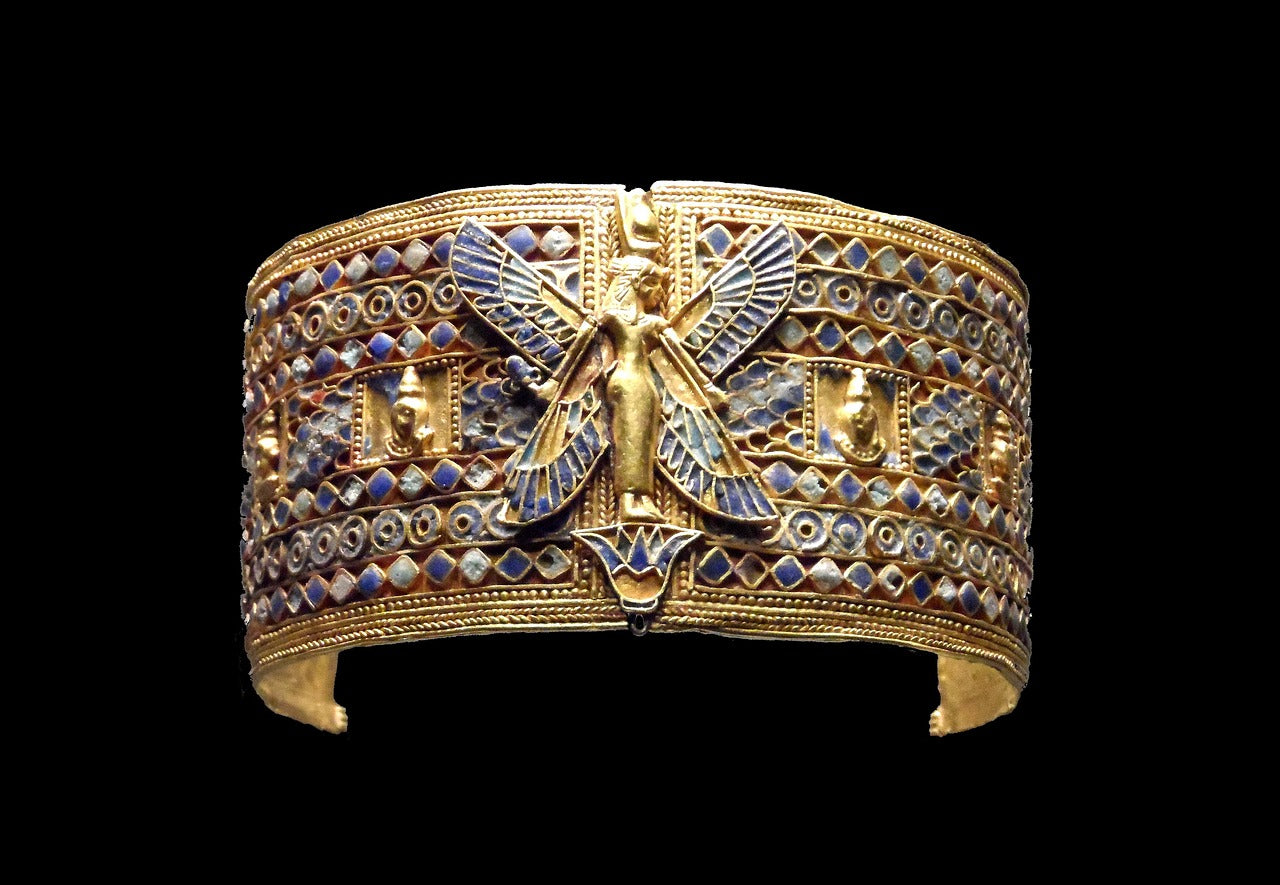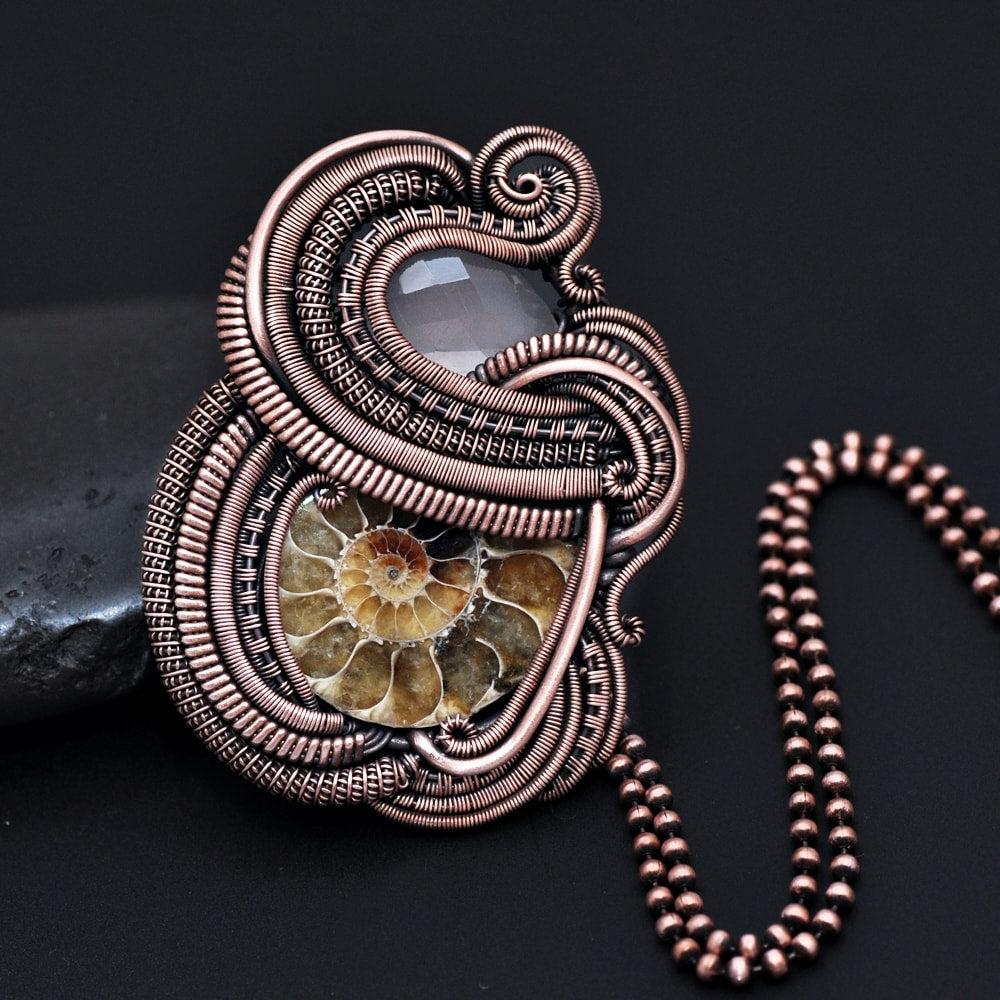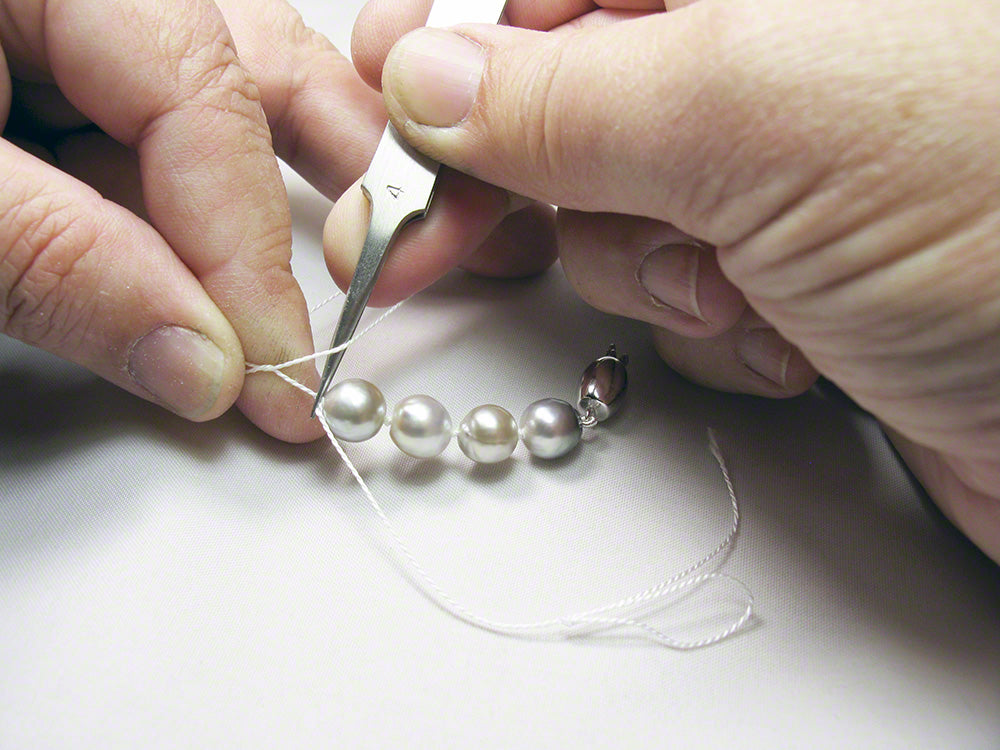
The Evolution of Gold Jewelry Through the Ages: A Fascinating Journey Through History
Jewelry has been a cherished form of personal adornment for millennia, and its evolution through the ages is a testament to human creativity, culture and craftsmanship. From the earliest known jewelry pieces to the exquisite designs of the modern era, this article takes you on a captivating journey through the history of gold jewelry, showcasing the remarkable transformations and enduring beauty of this art form.
Prehistoric Treasures (c. 100,000 BCE–3000 BCE)
Jewelry-making predates recorded history, with evidence of jewelry dating back tens of thousands of years. Early humans adorned themselves with simple materials such as shells, bones and stones, crafting jewelry that served both decorative and ritualistic purposes. These pieces often held spiritual significance, offering protection or symbolizing social status.
Ancient Egypt: The Golden Age of Adornment (c. 3100 BCE–30 BCE)
The ancient Egyptians are renowned for their mastery of jewelry craftsmanship. From intricately designed amulets to opulent burial adornments jewelry designer played a central role in Egyptian society. Notable pieces such as the scarab beetle amulets, ankhs and the famous Tutankhamun death mask showcase the Egyptians’ artistry and devotion to the craft.

Egyptian bangle bracelet
Greco-Roman Elegance: Influence and Innovation (c. 800 BCE–476 CE)
The Greco-Roman period brought new techniques and designs to jewelry. Gold, gemstones and intricate metalwork became the hallmark of this era. The use of cameos and intaglios in jewelry became popular, as did the use of symbolism and mythology in design, reflecting the culture of the time.
Medieval Mastery: Symbolism and Spirituality (c. 476 CE–1450 CE)
During the Middle Ages, jewelry continued to evolve, taking on a strong religious and symbolic significance. Pieces such as reliquaries and devotional jewelry were prevalent, often featuring intricate detailing and the use of enamel. The use of precious metals and gemstones remained a sign of nobility and power.

Medieval-style jewel
Renaissance and Beyond: Opulence and Ornamentation (c. 14th century–17th century)
The Renaissance period witnessed a resurgence of interest in the classical world, leading to a revival of Greco-Roman styles in jewelry. Elaborate and highly ornate pieces became the fashion, showcasing an abundance of gemstones, pearls and intricate metalwork. The Medici family and their patronage of the arts greatly influenced jewelry design during this time.

Renaissance-era ring from Jogani featuring table-cut diamonds set in gold with enamel detailing
The Enlightenment Era: Neo-Classical Simplicity (c. 18th century–early 19th century)
With the Age of Enlightenment came a shift in jewelry design toward neoclassical simplicity. Inspired by archaeological discoveries in Pompeii and Herculaneum, jewelry designs featured classical motifs, such as laurel wreaths and ancient coins. Wedgwood cameos and hair-work jewelry also gained popularity.
Georgian Elegance: Regal Splendor (c. 1714–1830)
The Georgian Era, named after the reigns of the four King Georges of England, was characterized by elaborate jewelry designs. Pieces from this era often featured intricate metalwork, gemstone jewelry and motifs inspired by nature and sentimentality. Georgian jewelry remains highly collectible and admired for its craftsmanship.

Double-starburst brooch from the late 19th-century Georgian era featuring antique pear-shaped and circular-cut diamonds set in silver and 14-karat gold. The central star is mounted "en tremblant," meaning it's attached to a "trembler" such as a spring to give it movement when worn. Image courtesy of Sotheby's.
Victorian Extravagance: Sentiment and Symbolism (c. 1837–1901)
The Victorian Era saw a wide range of jewelry styles, each reflecting the sentiments and symbolism of the time. From mourning jewelry adorned with locks of hair to elaborate brooches, rings and bracelets, jewelry served as a means of expression, often carrying deeply personal messages.

Victorian-era portrait bracelet designed as a series of woven ribbon motifs decorated with blue guilloché enamel. Set among the ribbons are five oval compartments, four of which feature miniature portrait paintings on ivory by François Meuret that depict members of the House of Orléans. Image courtesy of Sotheby's.
Arts and Crafts Era: Handcrafted Beauty (c. 1880–1910)
The Arts and Crafts movement valued handcraftsmanship and a return to traditional techniques. Jewelry from this era featured intricate designs inspired by nature, with an emphasis on the use of semi-precious gemstones and metals such as silver. Artisans such as Charles Rennie Mackintosh left an indelible mark on this period’s jewelry.
Art Nouveau: Nature’s Influence on Jewelry (c. late 19th century–early 20th century)
The late 19th century brought forth the Art Nouveau movement, characterized by its fascination with the natural world. Jewelry designers such as René Lalique and Louis Comfort Tiffany created pieces adorned with flowing lines, delicate insects and botanical motifs. The use of enameling and unique materials such as horn and glass set this period apart.

Art Nouveau-era butterfly brooch, set en tremblant in 18-karat gold. The body is formed with a cluster of rose-cut diamonds and an elongated pear-shaped cabochon opal. The wings are plique-à-jour enamel in pastel shades of blue, rose and yellow-orange, edged with rose-cut diamonds and decorated with two oval-shaped cabochon rubies. Image courtesy of Sotheby's.
Edwardian Elegance: Delicate Luxury (c. 1901–910)
The Edwardian Era, named after King Edward VII, was characterized by a focus on delicacy and luxury. Platinum became the metal of choice, allowing for intricate lace-like designs, often adorned with diamonds and pearls. Edwardian jewelry exuded refinement and elegance.

Edwardian-era platinum and yellow gold convertible necklace featuring diamonds totaling 2.27 carats at the center and further detailed by 58 Old Mine–cut diamonds weighing approximately 14.60 carats. The detachable pendant can be worn as a brooch. Image courtesy of Sotheby's.
Art Deco: Geometry and Glamour (c. 1920s–1930s)
The Roaring Twenties ushered in the Art Deco era, marked by geometric shapes, bold colors and a focus on luxury and glamour. Art Deco jewelry designs featured striking symmetry and the use of exotic materials, such as onyx, coral and jade. This period’s jewelry remains highly sought after by collectors.

Art Deco-era brooch by Cartier in a modified quatrefoil shape. At its center is a finely carved jadeite plaque of translucent apple-green color depicting a garden scene. The jadeite is highlighted by clusters of step-cut sapphires, a cabochon sapphire, a step-cut emerald and baguette-cut diamonds design, within a palmette design of Old European– and single-cut diamonds and jadeite beads outlined by red enamel. Two rock crystals carved in shield shapes complete the piece. Image courtesy of Sotheby's.
Retro Era: Hollywood Glamour (c. 1935–1950)
The Retro Era, influenced by the glamour of Hollywood and the impact of World War II, saw a resurgence of bold, statement jewelry. Yellow and rose gold were popular, and designs often featured large gemstones, including aquamarines and rubies. Jewelry of this era embraced a sense of luxury and optimism.

Retro-era hinged cuff bangle decorated with square-shaped, emerald-cut, unheated blue and yellow sapphires totaling approximately 75 carats, highlighted by circular-cut diamonds weighing approximately 1.50 carats, mounted in platinum and yellow gold. The two gem-set clips are detachable and can be worn separately as brooches. Image courtesy of Sotheby's.
Modern Era: Diversity and Innovation (c. 1950s–present)
Today, the world of jewelry design is a vibrant and diverse landscape. Contemporary designers draw inspiration from the past while embracing innovative techniques and materials. Sustainable practices and ethical sourcing are increasingly important considerations, reflecting the values of modern consumers.

Necklace of abstract design, circa 1950, featuring cabochon sodalite and circular-cut pink tourmalines. The necklace was designed by Henning Koppel for the Georg Jensen Co. His designs are noted for their organic aesthetic, inspired by other artists of the time such as Salvador Dali. Image courtesy of Sotheby's.
The evolution of jewelry through the ages is a remarkable journey that spans continents, cultures and centuries. From humble beginnings with shells and bones to the dazzling creations of today’s artisans, jewelry has evolved alongside human civilization, serving as a testament to our creativity, beliefs and aspirations. As we continue to cherish and celebrate the art of jewelry-making, we also honor the rich history that has brought us to this point, ensuring that its beauty endures for generations to come.


